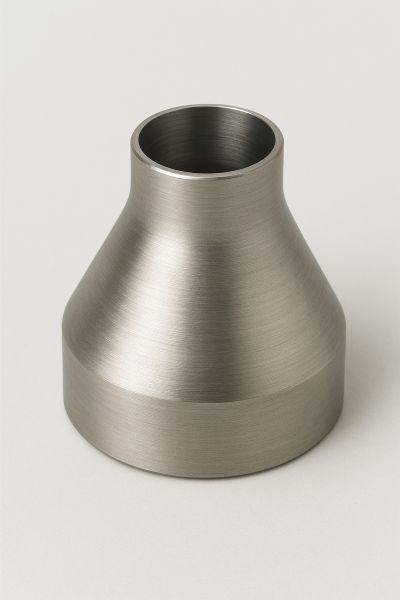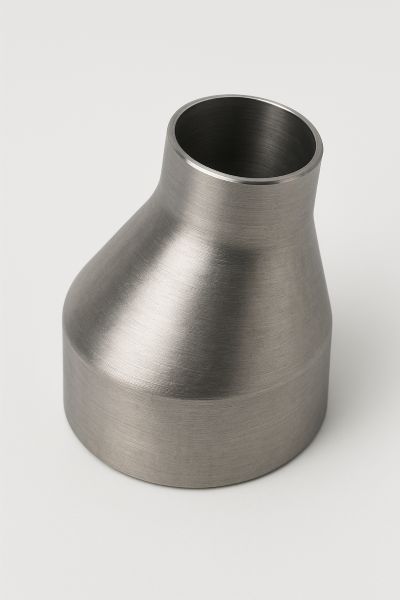Imagine a hydraulic system in a manufacturing plant. The pumps run at thousands of PSI, and the entire setup depends on smooth, efficient flow between pipes of varying diameters. One engineer chooses a standard reducer fitting to save costs, only to face a catastrophic pressure drop, vibration, and leakage within weeks.
Another engineer specifies a hydraulic bell reducer, ensuring seamless pressure handling and long-term reliability. The difference? Understanding how the right reducer fitting safeguards both performance and safety.
Understanding Pipe Reducer Fittings
A pipe reducer fitting is a component used to connect two pipes of different diameters. It allows for a smooth transition in flow, minimizing turbulence and maintaining system efficiency.
Reducer fittings are essential in controlling flow rates, pressure, and fluid dynamics in piping networks, whether in hydraulic systems, water supply lines, or process plants.
Types Overview
1. Concentric Reducer – Has a cone shape, keeping both pipe centers aligned; ideal for vertical piping.
2. Eccentric Reducer – Features offset centers to prevent air pockets in horizontal lines.
3. Bell Reducer – Broadens at one end like a bell, offering a gradual reduction—leading us to the hydraulic bell reducer, a specialized, heavy-duty variant.
What Is a Hydraulic Bell Reducer Pipe Fitting?
The hydraulic bell reducer has a bell-shaped body that ensures a gradual and smooth diameter reduction. It’s reinforced to withstand the high pressures and dynamic stresses of hydraulic applications.
Typically made from carbon steel, stainless steel, or alloy steel, these materials are chosen for their strength and corrosion resistance under extreme conditions.
Hydraulic bell reducers are designed according to stringent standards such as ASME B16.9, ASTM A234, or SAE J514, ensuring compliance with safety and quality benchmarks.
Key Characteristics
➡️ Smooth internal contour reduces turbulence and pressure loss.
➡️ High pressure resistance for demanding environments.
➡️ Leak-proof sealing through precision machining and quality welding.
What Is a Standard Reducer Pipe Fitting?
A standard reducer fitting (either concentric or eccentric) is widely used across plumbing, HVAC, and low-pressure industrial applications. It serves to connect pipes of different sizes, maintaining basic flow efficiency.
Manufactured from PVC, steel, copper, brass, and other versatile materials, standard reducers are adaptable to a range of systems and budgets.
These fittings are typically used for low to medium pressure systems, where the risk of turbulence or cavitation is minimal. Installation is straightforward and cost-effective, often requiring basic tools and standard sealing methods.
Key Differences Between Hydraulic Bell Reducer and Standard Reducer
|
Parameter |
Hydraulic Bell Reducer |
Standard Reducer |
|
Design Shape |
Bell-shaped, reinforced body |
Concentric or eccentric shape |
|
Pressure Rating |
High pressure (hydraulic systems) |
Low to medium pressure |
|
Material Strength |
Alloy or carbon steel |
PVC, brass, or stainless |
|
Flow Efficiency |
Smooth transition, minimal turbulence |
Moderate efficiency |
|
Applications |
Hydraulic, oil & gas, heavy machinery |
Plumbing, HVAC, irrigation |
|
Cost |
Higher due to durability |
More economical |
|
Maintenance |
Requires expert handling |
Easy installation and replacement |
Applications and Use Cases
Hydraulic Bell Reducer Applications
➡️ Hydraulic machinery and control systems
➡️ Oil & gas transmission pipelines
➡️ High-pressure industrial and marine operations
➡️ Power generation plants
Standard Reducer Applications
➡️ Residential and commercial plumbing systems
➡️ HVAC networks
➡️ Water treatment facilities
➡️ Irrigation and low-pressure pipelines
Advantages and Limitations
Hydraulic Bell Reducer
Advantages:
➡️ Exceptional strength and pressure handling capacity
➡️ Smooth fluid transition minimizes cavitation and turbulence
➡️ Extended operational lifespan
Limitations:
➡️ Higher upfront cost
➡️ Requires professional installation and inspection
Standard Reducer
Advantages:
➡️ Economical and widely available
➡️ Simple to install and replace
Limitations:
➡️ Limited pressure tolerance
➡️ May cause turbulence in high-pressure environments
How to Choose the Right Reducer Fitting
Keep in mind these considerations when choosing the right fitting:
1. Evaluate System Pressure Requirements – Match the fitting’s pressure rating to operational conditions.
2. Consider Flow Type (Hydraulic vs. Non-Hydraulic) – Hydraulic systems demand reinforced, precision-engineered fittings.
3. Check Material Compatibility – Ensure the fitting’s material resists corrosion and chemical exposure.
4. Review Standards and Certifications – Look for compliance with ASME, ASTM, or ISO standards.
5. Balance Cost and Longevity – Consider long-term performance over initial price savings.
Installation and Maintenance Tips
Here are the installation and maintenance tips:
➡️ Ensure Proper Alignment to prevent stress and leakage.
➡️ Use Quality Seals and Couplings to maintain integrity under pressure.
➡️ Inspect Regularly for corrosion, wear, or fatigue cracks.
➡️ Follow Manufacturer Guidelines for torque, installation angle, and pressure limits.
FAQ
Q1: What’s the lifespan of a hydraulic bell reducer?
With proper maintenance, a hydraulic bell reducer can last 15–25 years, depending on operating conditions.
Q2: Can a standard reducer be used in hydraulic systems?
Generally, no. Standard reducers are not rated for high-pressure or high-stress environments typical of hydraulic systems.
Q3: What are the maintenance intervals for each type?
Hydraulic reducers should be inspected annually, while standard reducers typically require routine checks every few years.
Conclusion
Choosing the right reducer fitting isn’t just about connecting two pipes—it’s about ensuring system reliability, safety, and efficiency. The hydraulic bell reducer excels in high-pressure, precision-demanding environments, while the standard reducer remains ideal for cost-effective, low-pressure systems.
Always match the fitting type to your system’s pressure, flow, and material requirements.
For best results, consult with professional engineers or certified suppliers to select the most suitable reducer fitting for your application.
Post time: Oct-07-2025



